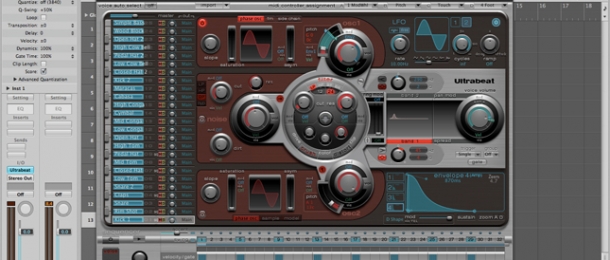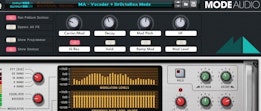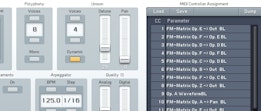
Logic's ESX24 was for many Apple Mac users the sampler/sequencer of choice when working with drum hits for a long time. However, its fiddly interface and old school look paved the way for the more recent creation of Ultrabeat, a hybrid synthesizer/sequencer dedicated to drum programming and beat design. In this tutorial we're going outline the various elements of Ultrabeat, with the goal of getting you more familiar with this versatile and powerful drum tool.
MIDI Potential
One of the best reasons to use Ultrabeat or in fact any sequencer for your drum programming is the power of MIDI. By loading your samples into channels in your sampler, you are then completely free to tweak and toy with your MIDI drum pattern in any way you see fit. This method also allows you to quickly copy patterns across different sets of drum sounds to thicken up your beat, without having to arrange things all over again. You can create your own patterns, or check our extensive range of files.
This functionality is offered by any drum sequencer you can load up in your DAW on a software track. What Ultrabeat has over most of these other plugins however, is the fact that it is a synthesizer too. So not only can Ultrabeat arrange and flesh out your drum patterns, it can be the very source of them too!
The Breakdown
Ultrabeat's interface can be split into 3 sections - mixer, sound generator/modulator and sequencer. Let's look at each in turn.
The mixer, located down the left side of Ultrabeat's interface, does exactly what it says on the tin and allows you set master levels, panning and output routing for the 25 available sample/synth sequencer slots.
The sound generator/modulator section is the heart of Ultrabeat and takes up the vast majority of its interface. If you want to use samples with Ultrabeat, this where you load them in. If you want to synthesize your own sounds, this is where you get tweaking. A variable state filter, EQ, 2 LFOs, distortion, bit crushing, ring modulation, 4 assignable amplitude envelopes and even frequency modulation can also be brought into play here. Best of all, these effects and modulators are available for every single sequencer slot available. Our Chroma Drums preset pack makes full use of these synthesis capabilities.
The final section at the foot of Ultrabeat is the sequencer, where you can programme in your own note events and velocities. An MPC style swing dial is also included for swung grooves. You are free to choose whether you use this sequencer or Logic's piano roll to programme in patterns.
Stereo and Beyond
Like many drum sequencers available on the market, Ultrabeat can be used as either a stereo or multi-output instrument. This means that you can choose to route each of Ultrabeat's 25 channels either to a single stereo track, or many more separate tracks.
Whilst the stereo option is certainly quicker and easier to programme, we'd heartily recommend you at least trying out the multi-output option. What this allows you to do is route each element of your Ultrabeat kit to a different track, thus letting you process each drum separately. This is vital if you want to add some transient shaping to the snare but nothing else, or some reverb only to your cymbals and so on.
After spending a bit of time with Ultrabeat, it quickly becomes apparent that we are dealing with so much more than a humble drum sequencer. Ultrabeat goes far and above the call of duty in this and many other regards - check out our other tutorials in this series to focus in on the benefits and features of particular parts of the synth.




